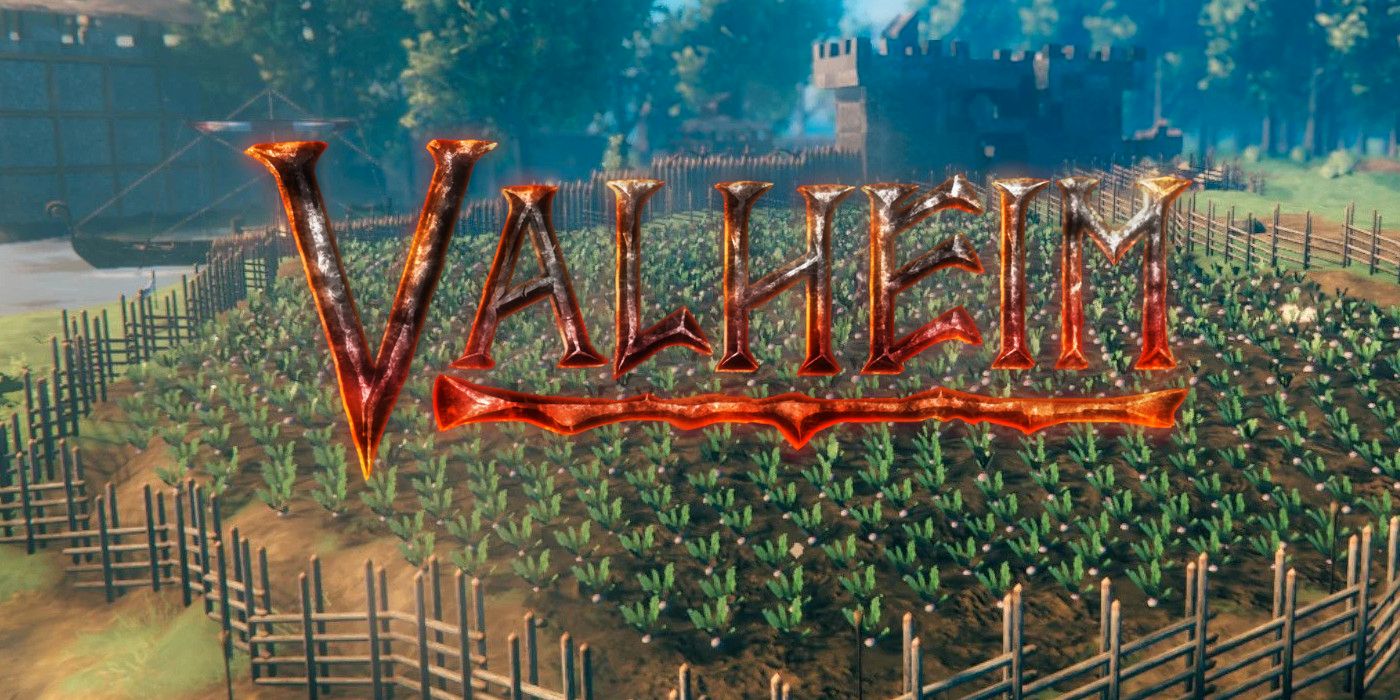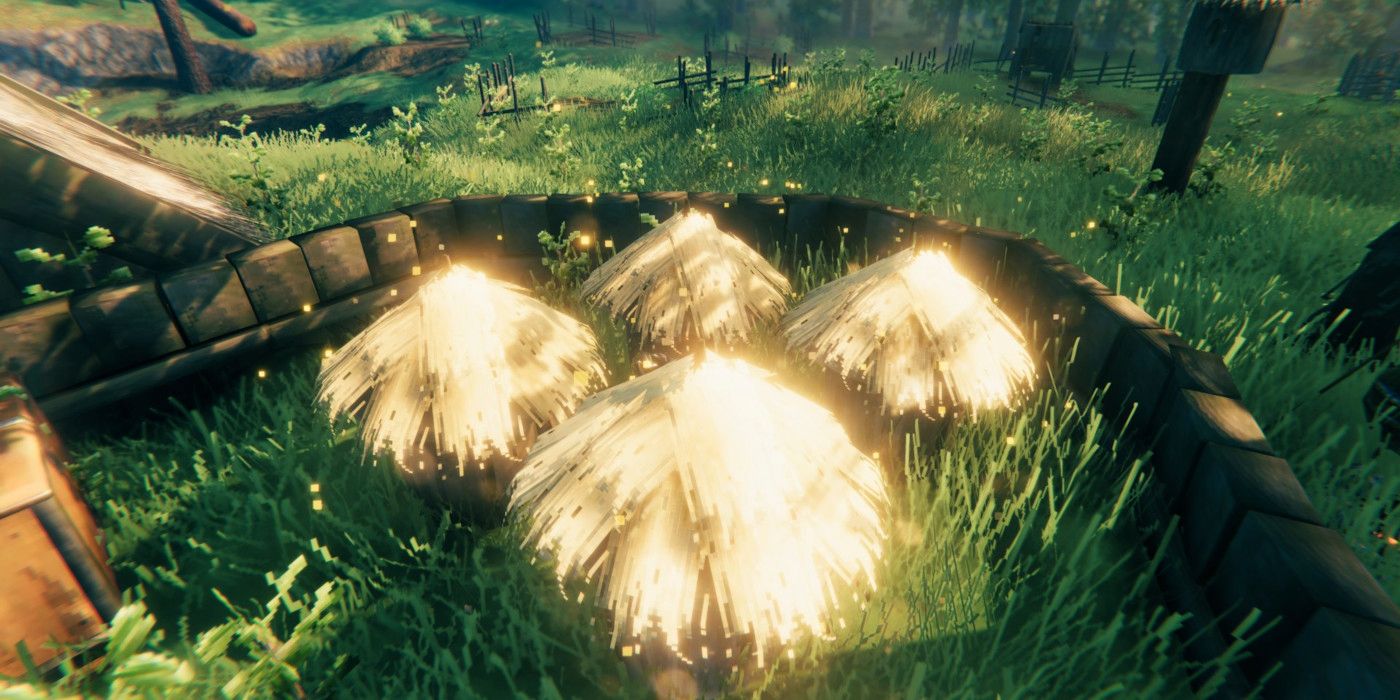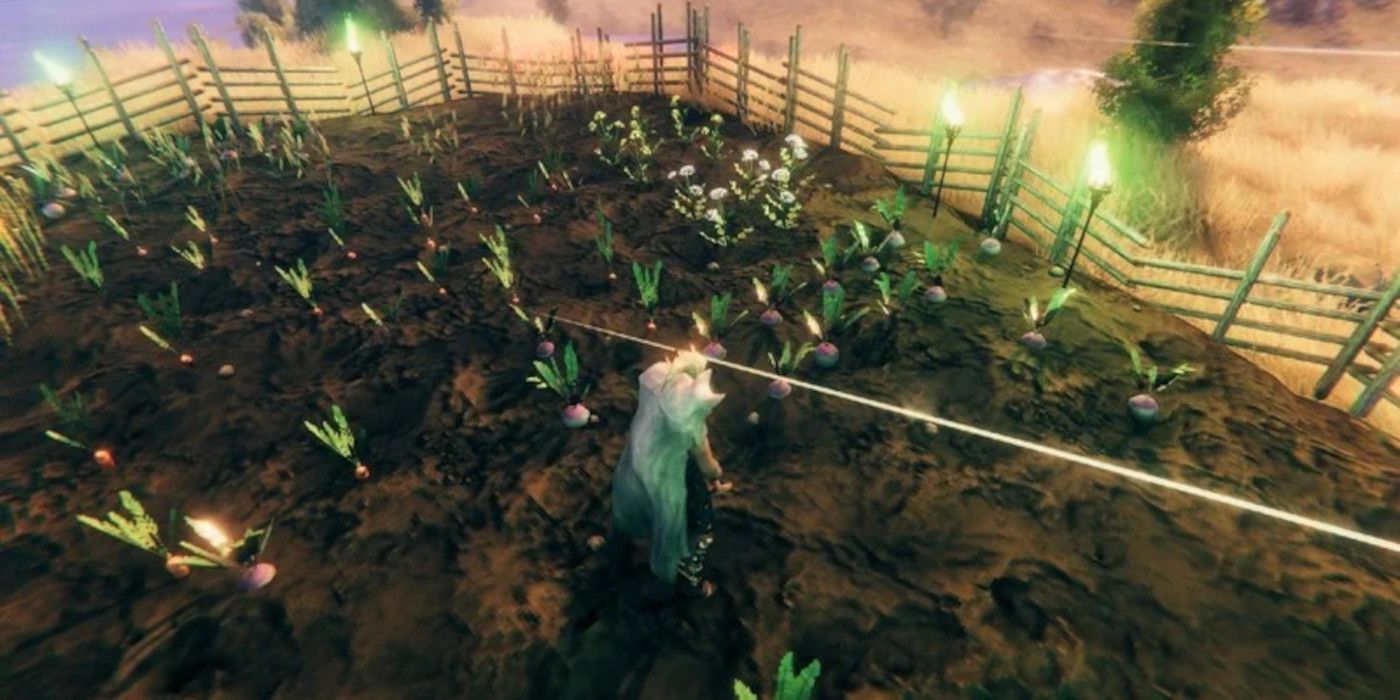
One of the smartest things a Valheim player can do is to ensure a steady food and leather supply in their game. While this may seem difficult at first, a well-run farm with domesticated animals and planted vegetables can make sure that players' Vikings are always well fed and well clothed.
Once players have built a house in Valheim, they can begin domestication. Players have the option to plant turnips, carrots, and barley, domesticate wolves, boar, and lox, and build bee hives. With a fully operational farm, players can make turnip stew, cooked meat, and have a lifetime supply of leather scraps. But in order to get started, players will need to get a few things first.
Wild Board are the first thing that players will most likely come across that can be tamed and brought home to their farms. Taming Valheim boar takes a few in-game days, but it is well worth the effort. Targeting one- and two-star boars to tame will make the process even more lucrative, as they will drop additional Valheim leather scraps and raw meat.
RELATED: Valheim Player Makes Incredible Notre Dame Recreation In-Game
In order to tame a boar in Valheim, players need to be able to build in a fenced-in area. This area should have a gate and be fairly small. Leaving the gate open, the player can then search for boar nearby to aggro and bring into their pen, closing the gate behind it. Players should build small enclosures for each pig they mean to tame; they will need at least two to start a breeding program.
Once a player has the two boar contained, all they need to do is feed them for about one in-game day with red mushrooms, blueberries, and/or raspberries without scaring them. Sneaking around the pen will prevent the boar from being frightened while leveling up a player's sneak stat at the same time. Keep feeding the board and watch as the little yellow hearts spill from their little piggy snouts. An explosion of yellow hearts will occur when the boar is tamed. Now players can pet them and walk by their cages without bothering them.
Getting boar to breed is as simple a continuing to feed them. Once the baby piggies are grown, the boar will continue to breed as long as they have space. Players can cull the herd in order to promote breeding, get some leather scraps, and fill up their inventory with raw meat as well. Raw meat is important ingredient in some of the best Valheim food recipes and is needed for taming Wolves.
Players can also domesticate their own bee hives very early in the game. Bee hives are found usually in abandoned houses and other buildings in the Meadows. These grey, swirling nests will look a lot like real-life wasp nests. Since they poison players that get too close, and it is probably too early game for players to have made a Valheim fermenter and some poison-resistance potions, they should keep their distance. The easiest way to knock down a hive is using arrows to hit it. But if players don't want to waste their ammo, they can just as easily build a Workbench in the abandoned building, then use the middle mouse button to break down the wood supporting the hive.

Once the hive is down, players will get a Queen Bee to start their own hives in Valheim. Hives are under the crafting menu when the hammer is selected and each hive requires 10 wood, a Queen Bee, and enough space that the bees are happy. Putting the bee hives too close to each other or other structures will cause the bees to be unhappy and stop making honey.
RELATED: Valheim: How to Level/Flatten Ground
Honey is a very important ingredient for all the mead bases, which can be fermented into Valheim potions.
Once players have defeated the first boss Eikthyr, they will be able to mine copper and tin, then forge them together into bronze. Getting bronze will give players access to a tool called the Cultivator, will will allow them to plant seeds, plant vegetables to get more seeds, and plant grass for decoration around their home. In order to plant seeds, players will have to first cultivate the soil. Right-clicking while holding the Cultivator will allow players to choose which action, planting or cultivating, they want to do.
In the Black Forest, players will find small white-flowered plants. These hold carrot seeds. There is a similar-looking yellow-flowered plant in the Swamp Biome that holds turnip seeds. Either of these seeds can be planted in any Valheim soil except in the Mountain Biome. Players should plant all seeds they have room for while giving each plant plenty of room to grow. Once those plants have grown, make sure to plant the carrots or turnips once again to get more seeds; each planted vegetable will give three new seeds to plant.
While turnips can't be eaten on their own and carrots don't give much of a health or stamina boost on their own, they can be turned into hearty soups that will buff players and make it worth all the farming effort. Later on, when players have good enough gear and food to build a home in the plains, they will be able to harvest barley and flax as well. Barley and flax cannot grow outside of the Plains.

Wolves are massively helpful animals once domesticated. They can be bred to give players large amount of meat and Wolf pelts, can defend homes, and wolves can even be used to help defeat bosses in Valheim if a player breeds enough of them. The best method for taming wolves is to head out to the Mountain Biome with extra food, a pile of raw meat, a pickaxe, and a good shield.
Dig a large hole that the animals will not be able to escape right outside of the Mountain Biome. This will prevent a player's wolves from being killed by a passing Valheim stone golem, as those guys aggro anything that moves. Players can escape the hole by running (hold shift), holding W to run forward, and jumping; this is effectively a double jump that will allow players to get out of the hole without digging their way out.
Next, aggro a wolf or two and lead them back to the pit. Using a good shield, block their attacks and push them into the pit, using stamina recovery potions if needed. Fill the pit with 5 raw meat per wolf, then wait an in-game day. It's best to keep close by; untamed wolves can despawn if a player gets too far away. Once the wolves are domesticated, they can be ordered to follow a player or to stay by petting them. While wolves can't be brought through portals, they can be pushed onto ships and sailed home.
RELATED: Valheim: Vulkan vs Normal - Which to Choose?
Breeding wolves requires raw meat, which is good because with all those domesticated pigs, players should have a backlog of raw meat. In order to get wolves to breed, they need to be penned in fairly close to each other, and no other wolves can be around. If a pair sees too many other wolves nearby, they won't breed. Once grown up, players can then use their new wolves as guards, fighters, or as pelts to upgrade their Valheim Wolf Armor.
Unfortunately, players can't pet the puppies until they are adults.
Now that players have access to Wolf Pelts, Raw Meat, Leather Scraps, Carrots and Carrot Soup, Turnips and Turnip Soup, and have furry companions, what else could a farm in Valheim bring them? With the defeat of the Valheim boss Moder, players will be able to process barley and flax. This will allow them to make the best armor set currently in the game as well as eat the best foods.
The Padded Armor Set is Valheim's top tier armor. With all three padded armor pieces, players can have up to 100 armor, a far cry from the 16 armor of the leather set. Barley is used to make Barley flour, which can be made into fish wraps, lox pie, and bloodpudding. These three items will fill a Viking's belly and make both their health and stamina bars massive.
While both of these plants have to be farmed in the Plains, players don't have to move their whole farm to the plains; even with the best defenses possible around their Valheim house, the boars and wolves can be killed by Deathsquitoes while the plants and building are razed by angry goblins. Instead, players should just build a small, moated house big enough for a portal and a workbench with a garden big enough for their flax and barley. The moat will keep out just about anything that would destroy a player's hard work.
And that is all of the objects that can currently be domesticated and bred or grown in Valheim. While lox can be tamed, these massive beasts cannot yet be bred. Hopefully someday soon, all Valheim players will get to see what a baby Lox looks like.
Valheim is in Early Access for PC only.
MORE: Panic Button Wants to Make Valheim Switch Port
Source: Wiki

